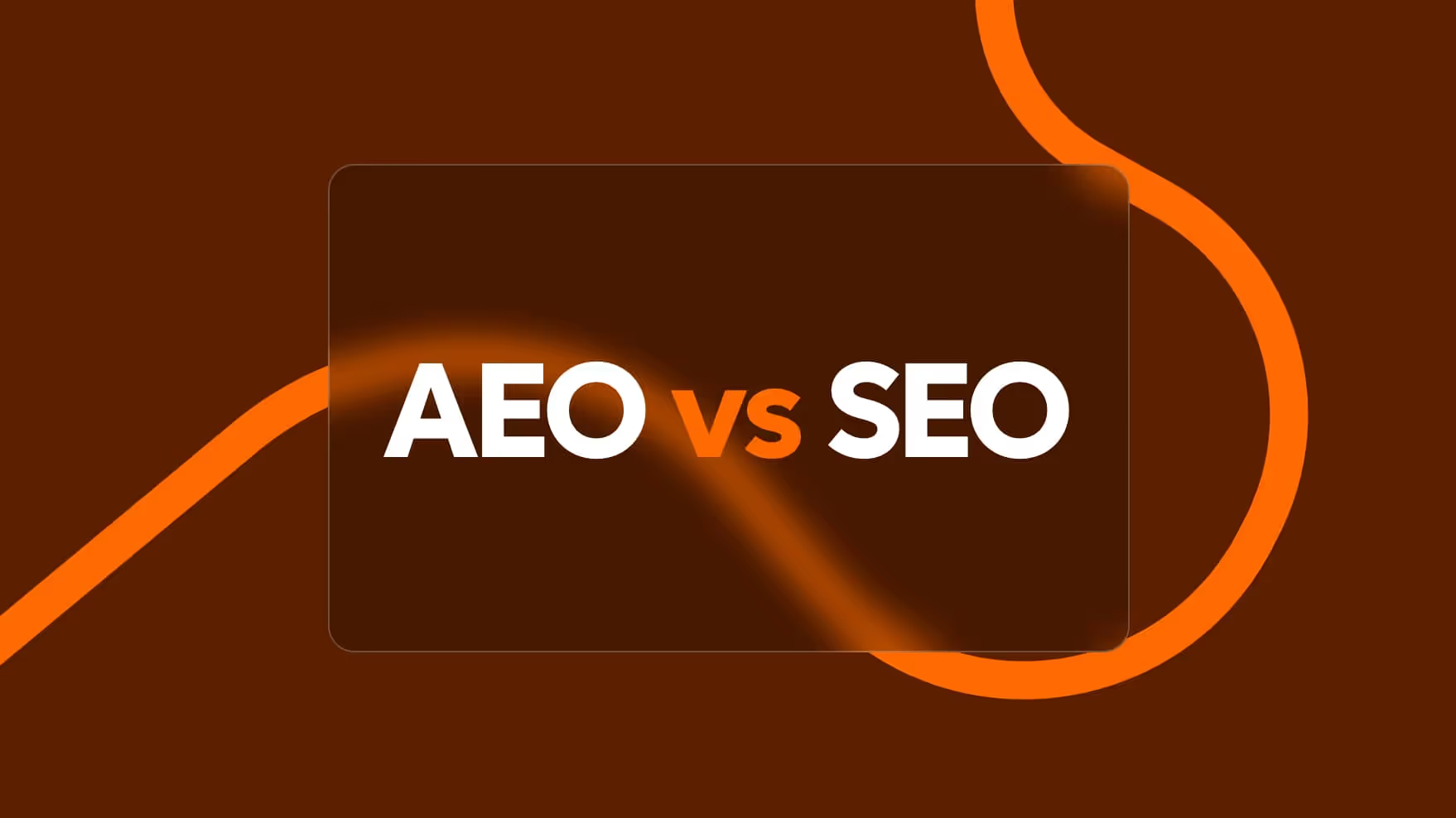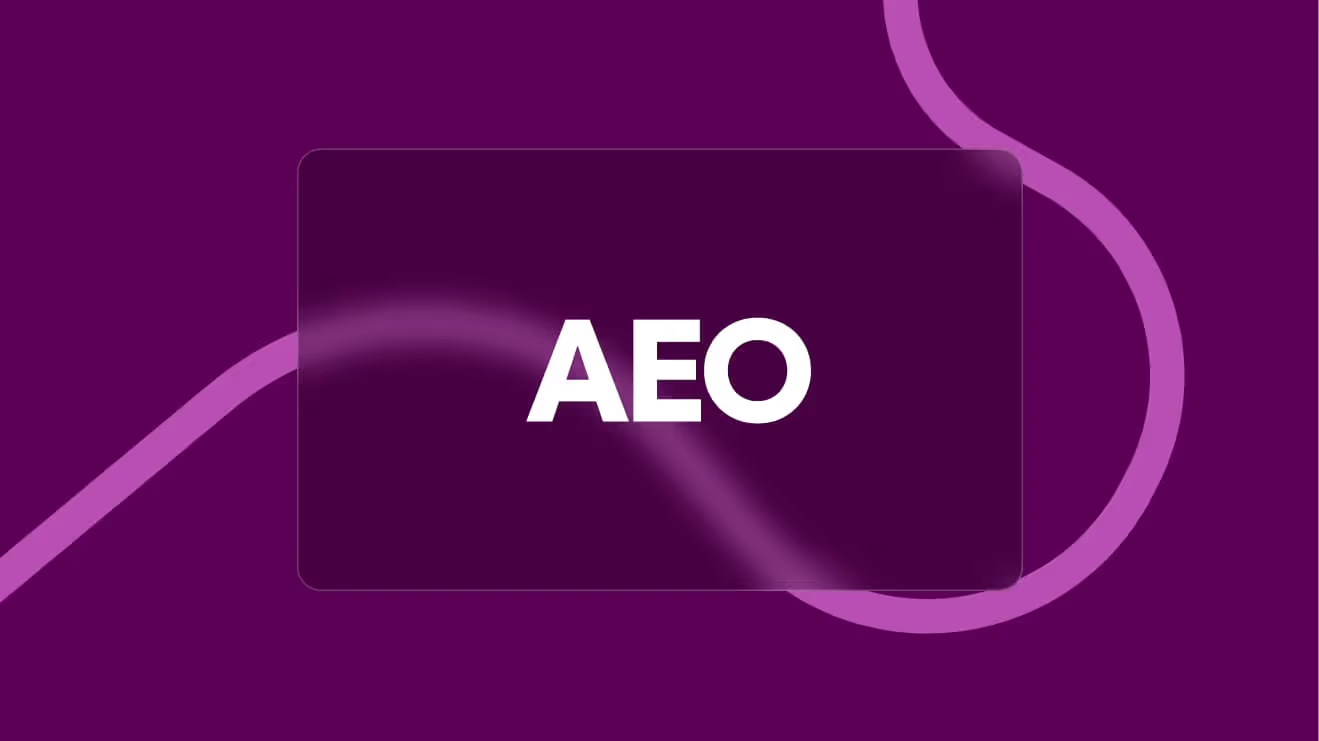
Today, businesses must optimize not just for traditional search engines, but also for emerging “answer engines.” Search Engine Optimization (SEO) is the established practice of improving a website’s visibility on search engine results pages. Answer Engine Optimization (AEO) is a newer approach focused on getting content directly featured as answers (for example, in voice assistants or featured snippets).
This report provides a comprehensive comparison of AEO vs SEO for marketers and business owners. We will define each concept, explore practical strategy adjustments and technical implementation, discuss algorithmic differences, examine return on investment (ROI) considerations, and highlight future trends – especially the growing influence of artificial intelligence SEO and GEO (Generative Engine Optimization) in shaping search.
Recent data underscores why this matters: ~53% of website traffic still comes from traditional organic search (SEO) yet an estimated 58% of queries are now conversational in nature, requiring concise direct answers. In other words, SEO remains crucial for traffic, but AEO is increasingly essential for capturing those immediate answers. Below, we delve into what each entails and how to balance both for maximum visibility.

What is SEO?
Search Engine Optimization (SEO) is the practice of improving a website’s visibility in organic (non-paid) search results. In simple terms, SEO helps your site appear higher on Google, Bing, and other search engines when users search for relevant terms. This involves optimizing various elements of your site so that search engine algorithms can easily crawl, index, and rank your content. Key components of SEO include:
- Keyword Optimization: Researching and using relevant search terms in your content and metadata (titles, descriptions) to signal topic relevance.
- On-Page SEO: Optimizing page elements like title tags, meta descriptions, headings, and image alt text to align with target keywords and improve clarity.
- Technical SEO: Ensuring your website is technically sound – e.g. improving site speed, mobile-friendliness, URL structure, and crawlability so that search engines can easily access and understand your site.
- Off-Page SEO: Building backlinks from other reputable sites, which boosts your site’s authority and trust in the eyes of search engines.
- High-Quality Content: Creating informative, valuable content that satisfies user queries, thereby improving engagement and signaling to search engines that your site is a credible resource.
The ultimate goal of SEO is to drive high-quality, long-term organic traffic to your site. By ranking near the top for relevant searches, you attract visitors who are actively looking for the information, products, or services you offer. This builds brand authority and trust over time. In summary, SEO is a foundational digital marketing strategy that, when done well, increases your visibility to potential customers and supports broader marketing efforts (content marketing, paid ads, etc.) by feeding your funnel with organic traffic.

What is AEO?
Answer Engine Optimization (AEO) is the process of optimizing your content specifically for “answer engines” – digital platforms that provide users with direct answers instead of a list of website links. In other words, AEO aims to get your content featured as the immediate answer to user questions on platforms like voice assistants (e.g. Siri, Alexa, Google Assistant), search engine featured snippets (the highlighted answer boxes at the top of Google results), and AI chatbots that answer queries. The focus is on concise, relevant answers to natural-language questions, rather than on driving users to click through multiple search results.
Use Structured Data (Schema Markup)
Implement schema.org markup (for example, FAQPage, Q&A, HowTo schemas) to explicitly tell search engines about the questions and answers on your pages. Structured data is crucial for AEO because it gives context to your content, increasing the likelihood of being featured in answer boxes or voice results.
Clear Question-and-Answer Formatting
Frame content around common questions in your niche. For instance, create FAQ sections or dedicate posts to answering specific questions using natural language. Each question should be immediately followed by a concise answer. This Q&A format makes it easy for answer engines to pull a direct response.
Semantic SEO and User Intent
Go beyond exact keywords and incorporate semantic search principles – focus on the intent behind user queries and the entities/topics related to your niche. AEO emphasizes understanding what the user really wants to know (“user intent”) and providing that answer clearly. By covering related sub-questions and context, you signal to AI-driven engines that your content is an authoritative source on the topic.
Leverage the Knowledge Graph
Aim to have your brand or content recognized as a factual authority. This could include maintaining accurate business listings, Wikipedia entries, or schema markup that could feed into Google’s Knowledge Graph. Being part of the knowledge graph can help your content be chosen as a trusted answer.
Why AEO is rising in importance
Modern search behavior is increasingly about getting instant answers. Several trends are driving the rise of AEO:
Voice Search and Digital Assistants
Users often speak queries to Siri, Alexa, Google Assistant, etc., and expect a single spoken answer in return. Voice searches tend to be phrased as questions (“What’s the best restaurant nearby?”) and the assistant responds with a direct answer. Optimizing for these scenarios is squarely in the realm of AEO.

Zero-Click Searches
Search engines like Google now frequently provide answers right on the results page (a definition, a featured snippet, a calculator result, etc.) so the user might not click any result. AEO targets those featured snippets and answer boxes, ensuring your content is the one that gets displayed in those zero-click answer spots.
AI-Powered Q&A Platforms
Beyond traditional search engines, new AI chatbots and answer engines (from ChatGPT to specialized domain-specific bots) use web content to generate answers. As these tools gain popularity, content creators need to optimize for them – which is essentially what AEO encompasses.
In summary, AEO is about aligning your content with the way people ask questions today, and structuring it so that machines can easily fetch and showcase your answers. It complements traditional SEO by focusing on answering user needs directly, rather than just ranking a page for a keyword. AEO often involves providing succinct, authoritative answers up front, then elaborating if needed – which can significantly enhance user satisfaction and engagement.
How Search and Answer Algorithms Differ
From a technical perspective, SEO and AEO differ significantly in how content is delivered to users. Understanding these differences clarifies why distinct optimization tactics are required for each.
Traditional Search Algorithms (SEO)
Traditional search engines, such as Google, index billions of web pages using automated crawlers. They then rank these pages based on complex algorithms evaluating numerous factors, including keyword relevance, content quality, backlinks, and user engagement metrics. Historically keyword-driven, modern search algorithms increasingly rely on artificial intelligence, notably machine learning models like RankBrain, BERT, and MUM, to interpret queries and contextualize content.
Deterministic Nature of SEO Algorithms
SEO operates within a deterministic framework. If a webpage ranks highly for a specific query today, it generally maintains that position unless affected by significant changes in the algorithm or competitive landscape.
Answer Engine Algorithms (AEO)
Answer engines utilize advanced Natural Language Processing (NLP) and artificial intelligence techniques to provide direct answers rather than lists of links. Platforms such as voice assistants (Alexa, Siri) and Google’s featured snippets exemplify these answer engines. Their primary goal is extracting precise, concise, and contextually relevant information directly from content.
Use of Knowledge Graphs and Structured Data
Answer engine algorithms frequently rely on structured data (schema markup) and knowledge graphs, databases explicitly detailing entities and relationships. This method allows immediate extraction of answers, such as identifying "Paris" when asked, "What is the capital of France?"
Emphasis on Semantic Relevance
These engines prioritize semantically related content, assessing context and signals of authority to deliver precise answers.

Generative AI Answer Engines
Generative AI answer engines, like ChatGPT, Bing Chat, and Google’s Search Generative Experience (SGE), employ large language models (LLMs) to dynamically synthesize responses. Unlike traditional answer engines, generative AI may combine multiple sources, offering consolidated responses to queries in real-time.
Probabilistic Nature and Variability
These models operate probabilistically, meaning generated responses may vary each time. Increasingly, such engines include citations to enhance transparency, benefiting content creators through attribution.
Practical Strategies for Adjusting to AEO and SEO
Businesses must adopt complementary strategies to effectively optimize for both SEO and AEO.
Content Ideation: Shifting from Keywords to Questions
SEO primarily involves targeting keywords. Conversely, AEO requires identifying and addressing direct, conversational questions posed by users. Marketers should analyze commonly asked questions and explicitly address these in their content.
Optimizing Content Structure for Answer Extraction
Effective AEO implementation demands content formatted clearly for easy extraction by answer engines.
Question-Based Headings
Headings should mirror actual user queries. For example, use headers like “What is Answer Engine Optimization?” followed by immediate, clear responses.
Concise, Direct Answers
Provide succinct, authoritative answers in the first paragraph following a heading. Subsequent paragraphs can elaborate in greater depth.
Effective Use of Lists and Tables
Lists and tables structure information clearly, facilitating extraction by answer engines for featured snippets.
Writing Style: Conversational Yet Authoritative
Content optimized for AEO should maintain a conversational yet authoritative tone. Responses must sound natural to align with conversational user queries, yet remain credible through clear citation of authoritative sources and data.
Structured Data Implementation
Structured data markup is critical for AEO. Clearly marking up FAQ, HowTo, Product, and Q&A content significantly enhances visibility in answer engines.
Types of Structured Data
Implement structured data types such as FAQPage, QAPage, HowTo, Recipe, and Product schemas to explicitly define answers.
Schema Testing and Validation
Regularly use tools like Google’s Rich Results Test to ensure correct implementation of schema markup.
Continued Commitment to SEO Fundamentals
AEO tactics should augment, not replace, established SEO best practices. Ensuring technical soundness, including fast load times, mobile optimization, and strong backlink profiles, remains essential.
Continuous Monitoring and Agile Adjustments
SEO and AEO performance monitoring should be continuous. Track featured snippet placements and voice query appearances to make timely adjustments. Consider adapting existing content to capture potential answer-engine opportunities.
Technical Implementation for SEO and AEO
Optimizing structured data, content formatting, and user intent targeting are central technical aspects influencing SEO and AEO success.
Structured Data Optimization
Structured data provides explicit content meaning, assisting engines in accurate content interpretation and snippet creation.
Content Formatting Best Practices
Ensure content readability and clarity through appropriate HTML semantics, structured paragraphs, and clearly defined headers, particularly question-based headers for AEO.
User Intent Alignment
Precisely align content with user intent, focusing on exact user questions and providing immediate answers for AEO, while maintaining comprehensive depth for traditional SEO queries.
Importance of Technical SEO
Technical SEO foundations, including site speed and mobile compatibility, significantly impact both SEO and AEO success.
Measuring ROI and Performance
SEO traditionally provides direct, measurable returns through quantifiable metrics such as traffic and conversions. Conversely, AEO’s ROI is often indirect, measured through brand awareness, credibility, and qualitative visitor engagement. However, as answer engines evolve, direct measurement via referrals from AI-generated citations may become more prominent.
Future Trends: Artificial Intelligence and GEO
Artificial intelligence continues reshaping optimization strategies, influencing both traditional SEO practices and emerging Generative Engine Optimization (GEO) methodologies.
AI-Enhanced SEO Practices
AI-driven algorithms prioritize semantic relevance, topic authority, and E-E-A-T signals, pushing optimization efforts beyond keywords to deeper, contextual content strategies.
The Emergence of GEO
GEO strategies target AI-driven generative engines, emphasizing authoritative, well-cited, comprehensive, and natural-language content. Optimizing for generative AI platforms necessitates clear, citable content, long-form comprehensive coverage, and strong credibility indicators.
Conclusion: Integrating SEO, AEO, and GEO
SEO, AEO, and GEO represent complementary aspects of a unified content strategy. Businesses proactively integrating these methods are well-positioned to achieve sustained digital visibility and competitive advantage, adapting dynamically to user behavior and technological advancements in search.